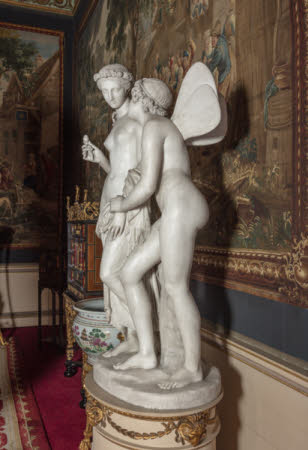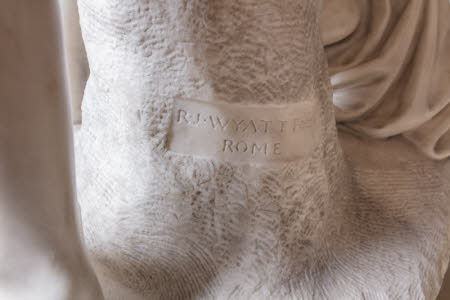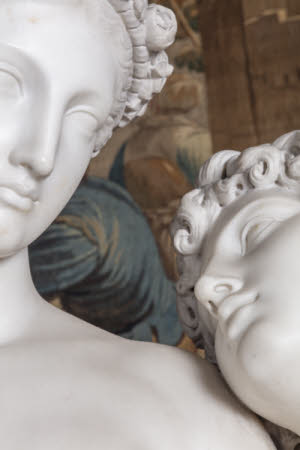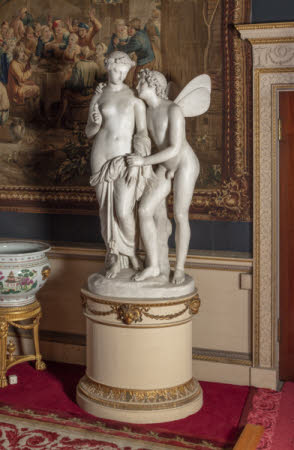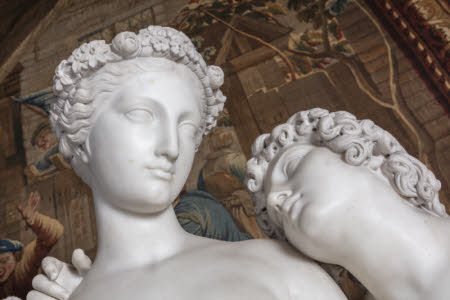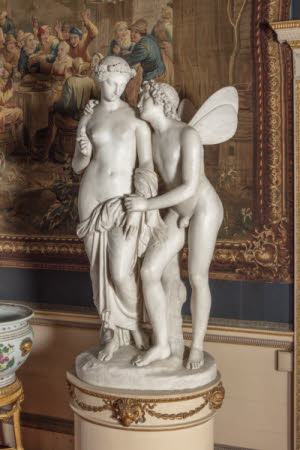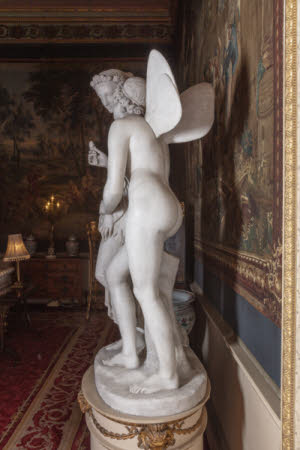Flora and Zephyr
Richard James Wyatt (London 1795 - Rome 1850)
Category
Art / Sculpture
Date
1834
Materials
Marble
Measurements
1650 x 940 x 670 mm
Place of origin
Rome
Order this imageCollection
Nostell Priory, West Yorkshire
NT 960129
Summary
White marble sculpture, Flora and Zephyr by Richard James Wyatt (London 1795 – Rome 1850), inscribed 'R J Wyatt Fecit Rome' on tree trunk. The pair are standing lightly draped and embracing, Flora wreathed and holding a rosebud on naturalistic base, on painted and giltwood socle with carved rams heads and husk chains around the frieze. The group was comissioned by Sir Robert Lawley, 1st Lord Wenlock of the first creation (1768 -1834) for Escrick Park, Yorkshire; bought by Charles Winn (1795 -1874) of Nostell Priory after Lord Wenlock's death at his villa near Florence in April. Wyatt specialised in ideal marble-figure groups, some, like this one, of mythological subjects, others derived from post-classical literary sources. Here Flora, the goddess of flowers, is shown with her young husband Zephyr, the west wind of springtime, who sports butterfly wings. the sculptor replicated this group later, and also sculpted a single figure of flora, but this marble is thoguht to be the primary version, first shown at the Royal Academy in 1834. During the 1830's Wyatt produced some of his finest work, perfecting the polished finish of the marble surface, which he did without the help of assistants, in the tradition of canova's working practice.
Provenance
Comissioned by Sir Robert Lawley,1st Lord Wenlock of the first creation (1768 -1834) for Escrick Park, Yorkshire; bought by Charles Winn (1795 -1874) of Nostell Priory after Lord Wenlock's death at his villa near Florence in April;purchased by the National Trust by private treaty sale from Lord St Oswald in 2009
Makers and roles
Richard James Wyatt (London 1795 - Rome 1850), sculptor
References
Trusted 2008: Marjorie Trusted, The Return of the Gods Neoclassical Sculpture in Britain, exh.cat. Tate Britain, London, 2008
